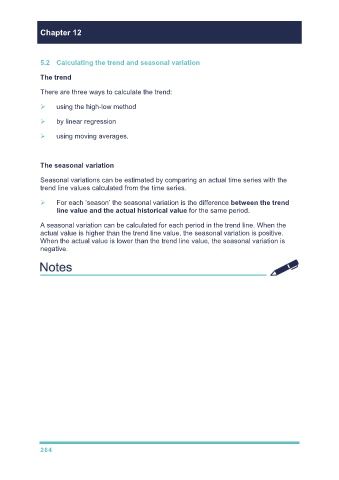Page 272 - F2 - MA Integrated Workbook STUDENT 2018-19
P. 272
Chapter 12
5.2 Calculating the trend and seasonal variation
The trend
There are three ways to calculate the trend:
using the high-low method The x axis represents time and the periods of
time are numbers, e.g. January is 1, February is
by linear regression 2, March is 3, etc.
using moving averages. This method attempts to remove seasonal or
cyclical variations by a process of averaging.
The seasonal variation
Seasonal variations can be estimated by comparing an actual time series with the
trend line values calculated from the time series.
For each ‘season’ the seasonal variation is the difference between the trend
line value and the actual historical value for the same period.
A seasonal variation can be calculated for each period in the trend line. When the
actual value is higher than the trend line value, the seasonal variation is positive.
When the actual value is lower than the trend line value, the seasonal variation is
negative.
264

